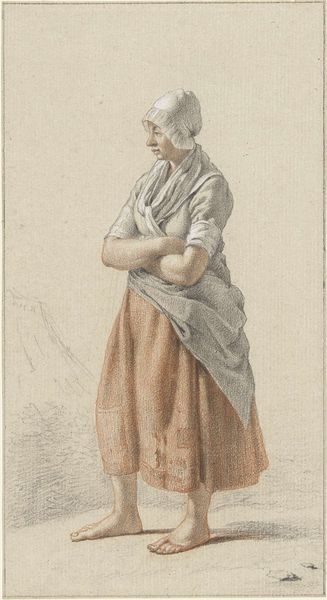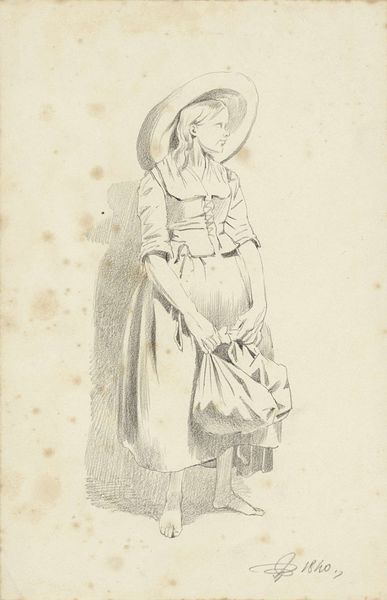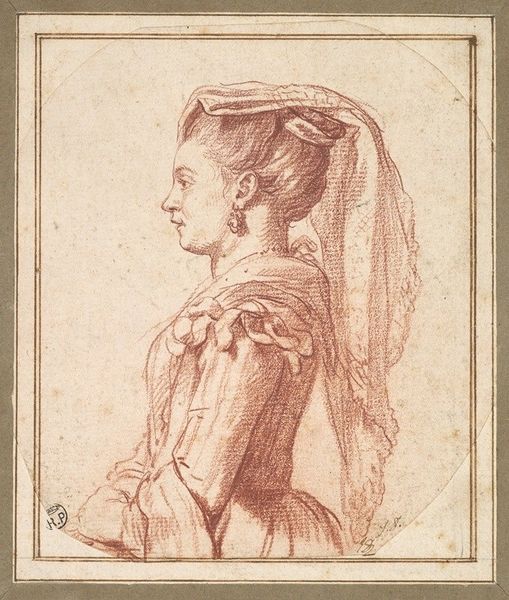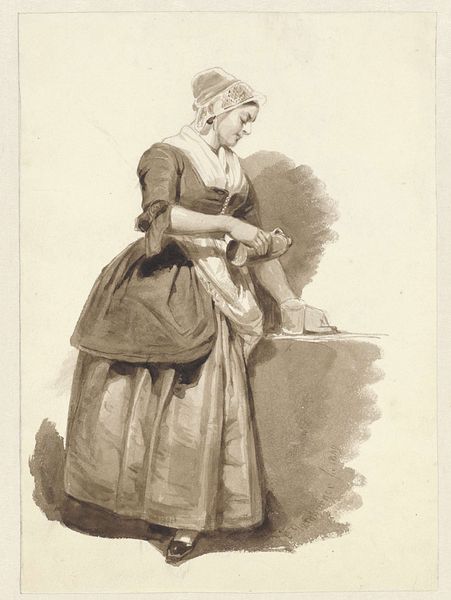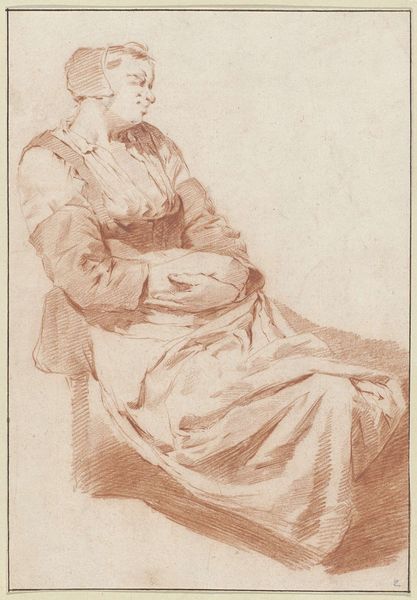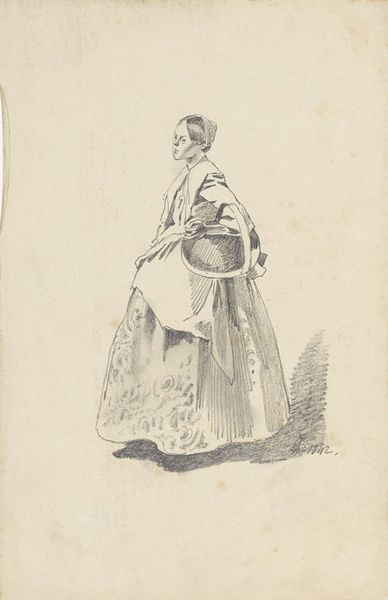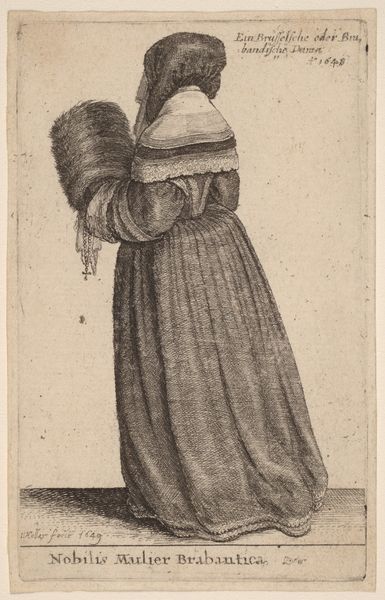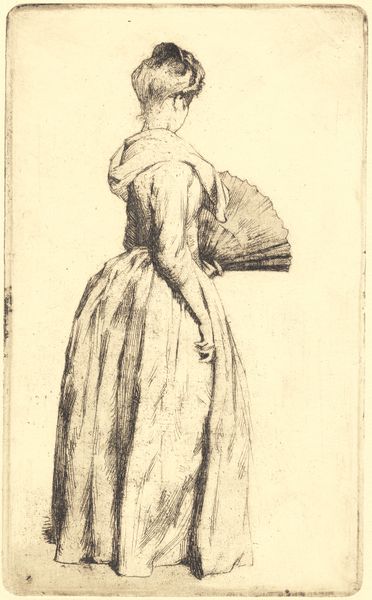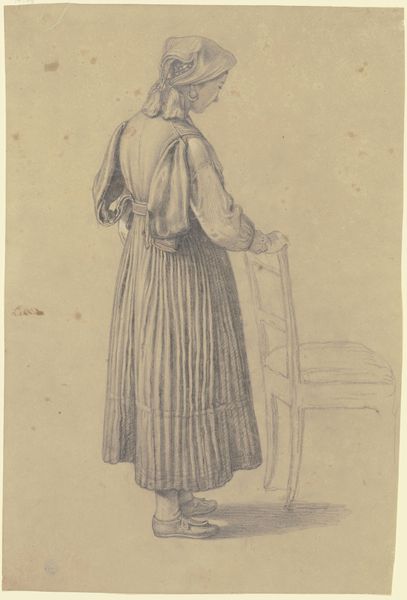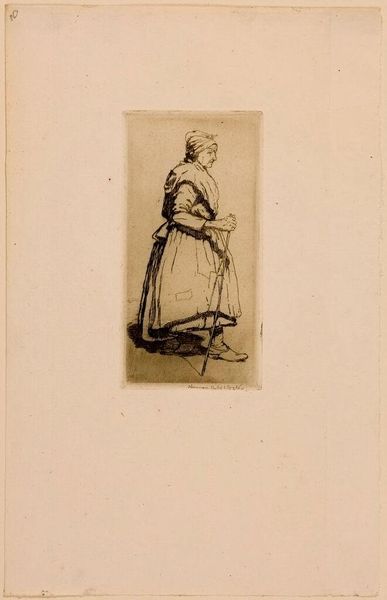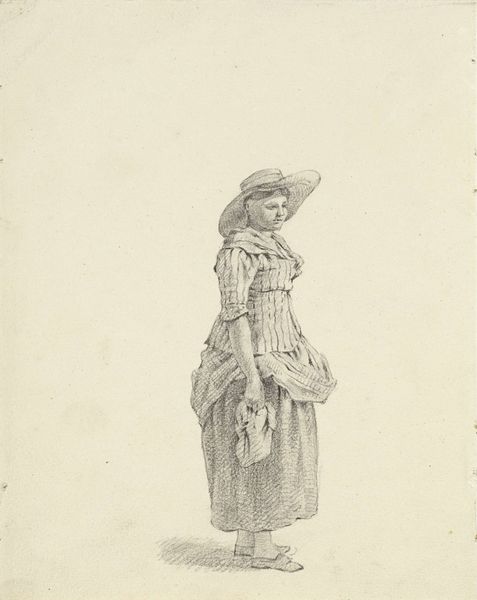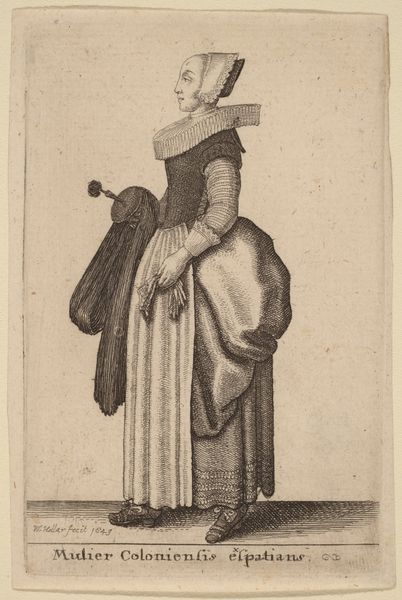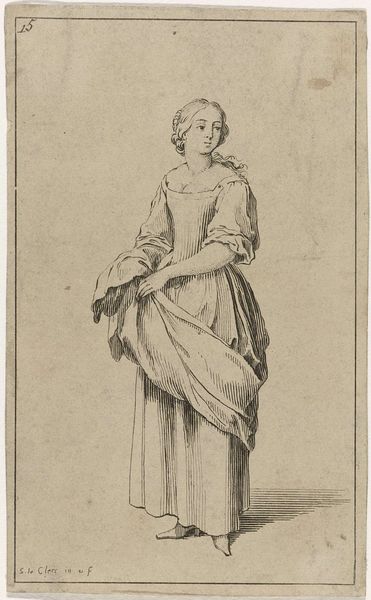
drawing, pencil
#
portrait
#
drawing
#
16_19th-century
#
dutch-golden-age
#
pencil sketch
#
pencil drawing
#
pencil
#
portrait drawing
#
genre-painting
#
academic-art
#
realism
Dimensions: height 331 mm, width 208 mm
Copyright: Rijks Museum: Open Domain
Curator: Anton Mauve’s "Standing Woman with Headscarf", created around 1855, offers us a glimpse into the lives of ordinary people during that era. Editor: It's a delicate study in pencil. I’m immediately drawn to the subject's stance and contemplative gaze; a feeling of serene pensiveness emanates from this sketch. Curator: Absolutely. The drawing provides an intimate portrayal of working-class women in 19th-century Netherlands, echoing a broader Realist movement that aimed to depict the everyday without idealization. Consider how rapid industrialization changed Dutch society, creating larger and more socially-stratified urban centers. It created, simultaneously, a heightened awareness of the class divides, but also social programs like schools to train young women in useful skills to participate in society, like teaching and nursing. Editor: It’s striking how Mauve captures the subtle gradations of light and shadow using only pencil strokes. Look closely and you can almost discern the texture of her clothes. The economy of line is remarkable; Mauve isn't interested in superficial details but rather the essence of form. Her facial features suggest strength and wisdom, or a premature knowing brought about by hard living. Curator: Realism sought to represent subjects and experiences that reflected the world around it, countering a strong current in academic painting that presented an ideal version of the world through mythological and historical scenes. It also suggests a growing emphasis on the working classes and the lives of people like the woman in the portrait. In fact, during this period artists and writers are often found engaging in social work. Editor: The headscarf becomes this strong framing device too, drawing your attention immediately to her face and the line of her neck. And then the cascade of cloth folds becomes this compelling formal element with a rhythm of its own. It really underscores his talent for seeing the sublime in the ordinary. Curator: I agree. Mauve’s work reminds us that art has a critical role to play in portraying the reality of human experience, serving not just as aesthetic enjoyment but also a mirror reflecting societal truths, biases and everyday life for ordinary women like our subject. Editor: Precisely! We can look, and see the artist saw what we value. Mauve found inherent beauty in a woman's quiet resilience, depicted with exquisite draftsmanship.
Comments
No comments
Be the first to comment and join the conversation on the ultimate creative platform.
